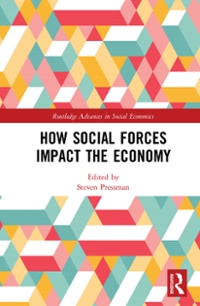Provide answers to the questions below.this questions are complete
Question 1
The following model for the force of mortality for a life insurance company's annuitants has been proposed: u(t, i) = (0.015 -0.0001t). expo (x; -70) + By; + y.z;] where: u(t, i) = force of mortality for the ith life, in calendar year 2000 + t ; x; = age of the ith life; v; = 1 if the ith life is a smoker, or y; = 0 if a non-smoker; z; =1 if the ith life is male, or z; =0 if female; and o, B, y are the parameters of the model. The following data have been observed over the calendar year 2003: Risk characteristics Number of annuitants Number dying Male non-smoker, average age 65 800 Male smoker, average age 60 200 -NUO Female non-smoker, average age 70 450 Female smoker, average age 65 150 You can assume that the numbers of annuitants in each class remained constant throughout the investigation period, and that the average age for each class can be treated as representing the value of x, for each individual in that class. (i) Explain why this model is a proportional hazards model. [2] (ii) Explain the importance of subdividing the data by age, sex and smoking status, and explain whether you think each of the parameters o, S and y would be likely to be positive or negative. [3] (iii) Calculate the force of mortality for female non-smokers with average age 70 in 2007, according to this model. [1] (iv) (a) Obtain an expression for the partial likelihood based on the given data, expressing your answer in terms of o, / and y only. (b) State how you would estimate the parameters of the model using the partial likelihood. [6] [Total 12]3 The pension scheme of a certain company provides an annual pension on retirement {for 'age* or 'ill health' reasons} of amount equal to one per cent of the member*s total earnings throughout his service. The pension is payable weekly. In addition. in the event of a member dying in service there is payable at the tirne of death a lump sum of f. There is no benet on withdrawal. The company pays a constant percentage of all the members1 salaries into the pension fund. The percentage is that which will exactly cover the cost of benets for a new entrant to the fund at age 30 with an initial salary rate of 391121.003 per annum. Contributions are payable continuously, and the employees do not contribute to the scheme. Expenses are negligible. {a} Calculate the contribution rate paid by the company, ammumg the last retirernent age is 55. {b} A valuation of the fund E to be conducted. For each active member of the scheme there is reCorded (i) the age nearest birthday (which is regarded as the member's exact age) at the valuation date, (ii) the annual salary rate at the valuation date, and (iii) the total past earnings in service (prior to the valuation date.) For each age, the totals of (ii) and (iii) are recorded and the following is an extract from the data. Age r No. of members Total past earnings Total of annual salary aged r for members aged r rates for members aged a 25 11 302,100 70,100 Assuming that the basis of the Tables provided is appropriate, find the liability at the valuation date for the benefits payable to the members aged 25, and determine whether the future contributions payable in respect of these members are more or less than sufficient to cover the benefits. A pension scheme provides each member who retires (for any reason) with annual pension equal to x final salary per year of service. Final salary is the average income over the last 3 years of service, and fractions of a year of service are not included when calculating the pension. Assuming that equal contributions are payable by the member and his employer, that in the event of death in service a benefit is payable equal to the return without interest of both the member's and the employer's contributions, and that in the event of withdrawal from service a return without interest is made of the member's contributions, calculate the appropriate contribution rate payable by both the member and his employer in respect of a new entrant aged 40









